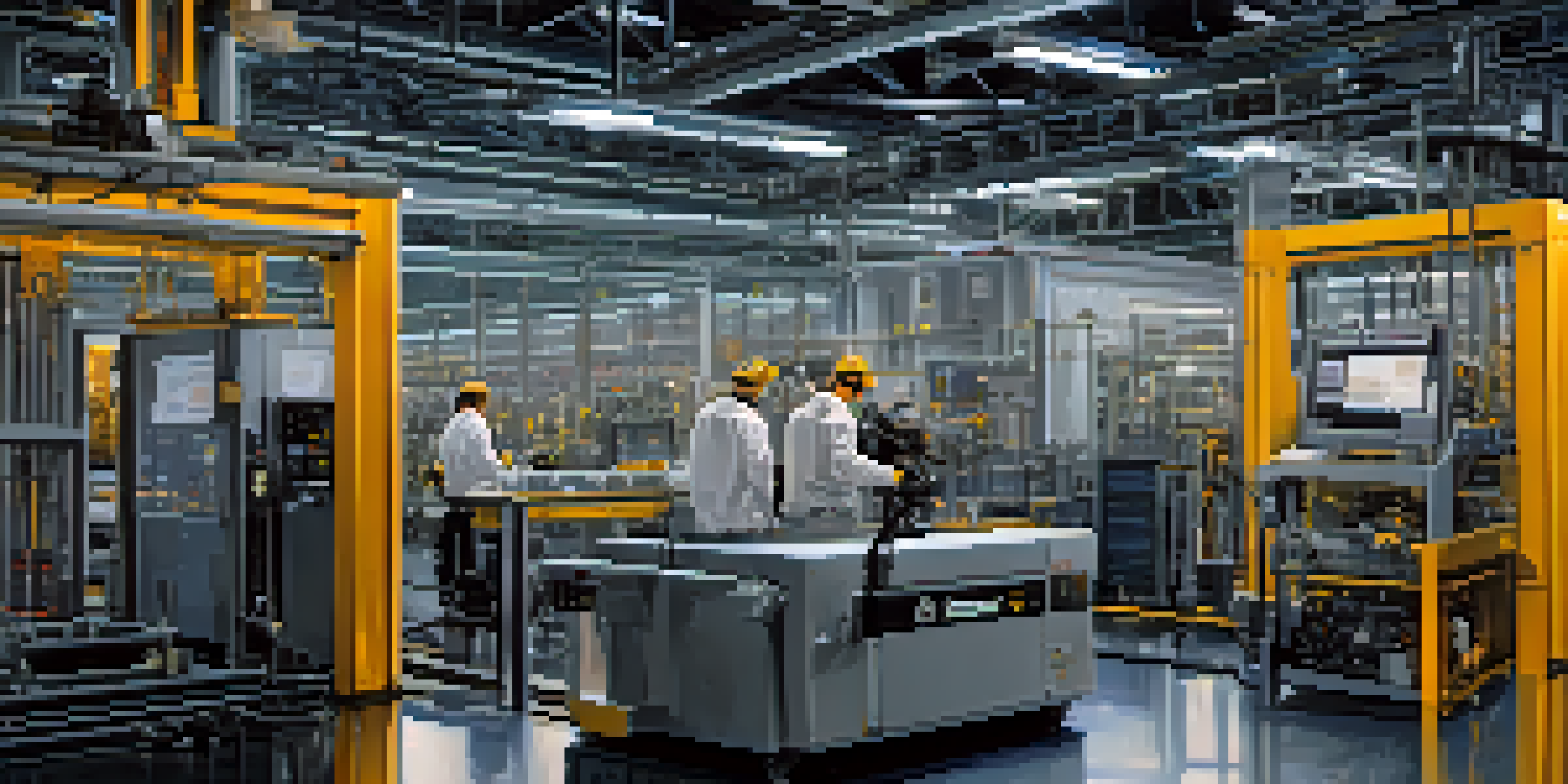AI's Role in Automating Predictive Maintenance Workflows

Understanding Predictive Maintenance in Industry
Predictive maintenance is a proactive approach to equipment management that aims to predict when maintenance should be performed. By analyzing data collected from machinery, businesses can schedule maintenance before a failure occurs, reducing downtime and costs. This method contrasts with reactive maintenance, where repairs are made only after a breakdown, often leading to more significant operational disruptions.
The goal is to turn data into information, and information into insight.
In industries like manufacturing and aviation, predictive maintenance can mean the difference between smooth operations and costly halts. For instance, a manufacturing plant that anticipates equipment failure can plan for repairs during off-peak hours, ensuring productivity remains high. This not only saves money but also enhances the lifespan of the equipment, leading to better overall efficiency.
However, manually monitoring equipment data can be overwhelming, especially as operational scales increase. This is where the integration of artificial intelligence (AI) comes into play, offering powerful tools to automate and improve the predictive maintenance process. With AI, businesses can unlock the full potential of their data and streamline their maintenance workflows.
How AI Transforms Data Collection and Analysis
AI-driven systems can collect and analyze vast amounts of data from machinery in real-time, something that would be nearly impossible for humans to manage alone. By utilizing sensors and IoT devices, these systems gather information on temperature, vibrations, and other performance indicators continuously. This constant flow of data allows AI algorithms to detect patterns and anomalies that may signal impending equipment failures.

For example, consider a wind turbine equipped with AI analytics. The system can monitor energy output and mechanical performance, predicting potential issues before they escalate. This capability not only minimizes downtime but also extends the turbine's operational life, ensuring consistent energy production.
Predictive Maintenance Reduces Costs
By anticipating equipment failures, businesses can schedule timely maintenance, minimizing downtime and operational disruptions.
Moreover, the AI's ability to adapt and learn from new data is crucial in refining predictive models. As it processes more information, the AI becomes better at identifying specific indicators of potential failures, making the predictive maintenance process even more reliable.
The Role of Machine Learning in Predictive Maintenance
Machine learning, a subset of AI, plays a significant role in enhancing predictive maintenance strategies. By training on historical data, machine learning algorithms can identify trends and correlations that might not be visible at first glance. This capability allows businesses to forecast maintenance needs more accurately, ensuring they are prepared for potential issues.
Predictive maintenance is not just about predicting failures, it's about understanding how to maintain and optimize your equipment for the long run.
For instance, a manufacturing company may use machine learning to analyze past equipment failures. By understanding the conditions that led to these failures, the AI can predict when similar issues might arise in the future, allowing for timely interventions. This proactive maintenance approach leads to fewer unplanned outages and reduced repair costs.
Additionally, machine learning models can continuously improve over time, meaning the more data they process, the more accurate their predictions become. This adaptive learning is a game-changer, as it allows companies to stay one step ahead of potential equipment issues.
Implementing AI in Predictive Maintenance Workflows
Integrating AI into existing predictive maintenance workflows may seem daunting, but it can be achieved in manageable steps. The first step usually involves assessing the current state of data collection and analysis practices. Understanding what data is currently being collected and how it is used will help identify gaps that AI can fill.
Next, businesses should invest in the necessary technology and infrastructure, such as IoT sensors and AI analytics platforms. These tools allow for seamless data collection and analysis, enhancing the overall predictive maintenance process. Collaboration between data scientists, engineers, and maintenance teams is also crucial to ensure that the AI systems align with operational goals.
AI Enhances Data Analysis Efficiency
AI-driven systems automate the collection and analysis of equipment data, allowing for real-time monitoring and more accurate predictions.
Finally, ongoing evaluation and adjustment of the AI systems are essential. Regularly reviewing the effectiveness of predictive maintenance strategies helps businesses refine their approaches, ensuring they continue to benefit from AI advancements.
Benefits of Automating Predictive Maintenance with AI
The automation of predictive maintenance workflows through AI brings numerous benefits to organizations. One of the most significant advantages is the reduction in unplanned downtime, which can drastically impact productivity and profitability. By predicting failures before they happen, businesses can schedule maintenance at convenient times, minimizing disruption.
Additionally, automated systems lead to more efficient use of resources. With AI handling data analysis, maintenance teams can focus on their core responsibilities rather than spending time sifting through data. This not only improves job satisfaction but also enhances the overall efficiency of maintenance operations.
Moreover, AI can help in optimizing inventory management for spare parts. By predicting when maintenance will be required, companies can ensure they have the necessary parts on hand, reducing delays and further improving operational efficiency.
Challenges in Implementing AI for Predictive Maintenance
Despite its many benefits, implementing AI in predictive maintenance does come with challenges. One common hurdle is the integration of new technology with existing systems. Organizations may face compatibility issues or data silos that can hinder the flow of information needed for effective AI analysis.
Another challenge is the need for high-quality data. AI systems require accurate and comprehensive data to function effectively. Incomplete or erroneous data can lead to faulty predictions, ultimately undermining the value of the predictive maintenance strategy. Organizations must ensure that their data collection processes are robust and reliable.
Machine Learning Improves Predictions
Machine learning algorithms refine predictive maintenance strategies by learning from historical data to forecast future equipment needs.
Finally, there is often a resistance to change within organizations. Employees may be hesitant to adopt new technologies, fearing job loss or increased workloads. It’s crucial for businesses to foster a culture of innovation, emphasizing how AI can enhance their work rather than replace it.
The Future of Predictive Maintenance with AI
Looking ahead, the future of predictive maintenance is bright, thanks to ongoing advancements in AI technology. As machine learning algorithms become more sophisticated, they will be able to provide even more accurate predictions, helping businesses to optimize their maintenance schedules. This evolution will lead to a significant reduction in costs associated with equipment failures.
Moreover, the integration of AI with other emerging technologies like augmented reality (AR) and virtual reality (VR) can further enhance training and maintenance processes. For instance, technicians could use AR glasses to receive real-time data and instructions while performing maintenance tasks, making the process more efficient and less prone to human error.

Ultimately, the combination of AI and predictive maintenance will enable organizations to become more agile and responsive to equipment needs, leading to improved overall performance. By embracing these innovations, companies can position themselves for success in an increasingly competitive landscape.